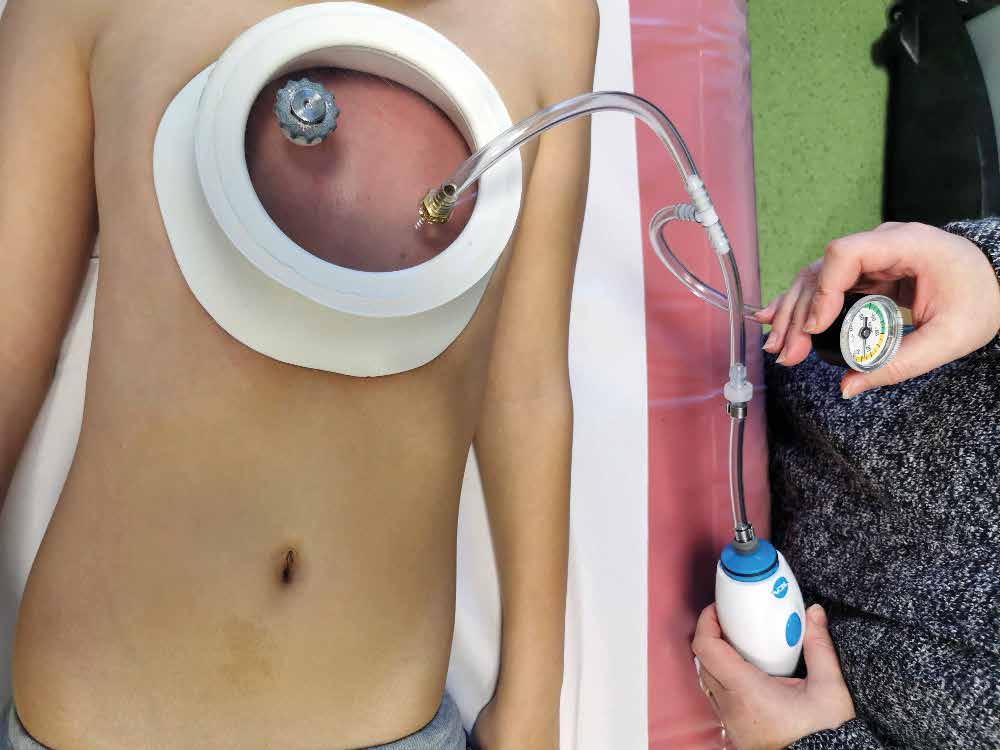Abstract
Pectus excavatum is the most common chest wall deformity in the Czech Republic. This chest deformity is typically characterized by a wall depression with sternal rotation. If the excavation of the chest wall does not cause any physical or psychological problems, the patient does not need any specific treatment. However, if the deformity is painful, affects the function of the lungs, heart or results in psychological problems, we can propose an appropriate treatment for the specific age category of the patient. Up to 10 years, we choose a procedure that includes targeted exercises and rehabilitation; in the age group of 10–15 years, we can add to the exercises the vacuum bell therapy according to the patient’s wishes and compliance; and in the age category of 16 years and above, the patient can be offered a surgical solution. The Nuss operation (so-called MIRPE – minimally invasive repair of pectus excavatum) is the gold standard in surgical treatment; during this surgery, a patient-shaped bar is inserted retrosternally into the patient’s chest under thoracoscopic control and is left for 3 years. The aim of this article is to describe the most common modern methods used in the treatment of patients with pectus excavatum, supplemented by a historical overview.

